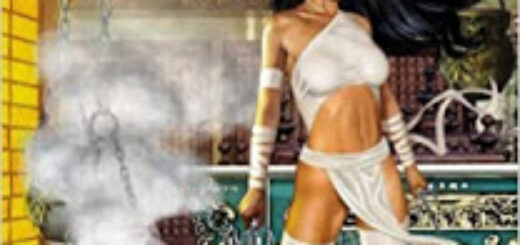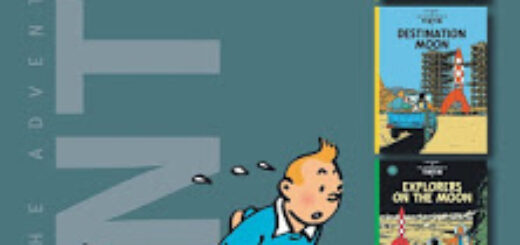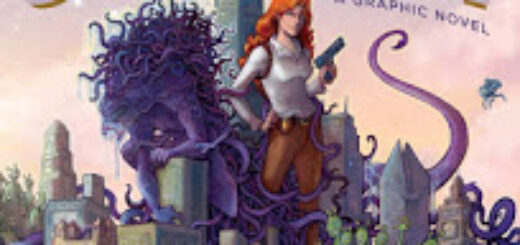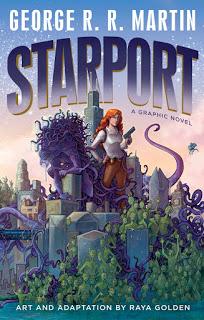The Contradictions by Sophie Yanow
Most of the reviews and blurbs I’ve seen about Sophie Yanow’s graphic novel The Contradictions focus on the radical politics, on how Sophie is learning about anarchism and communism and feminism and various related isms as a college student spending a year in Paris. But that seems to me to be entirely surface, and not what the book is about at all.
Sophie does meet Zena, who pulls her into that radical world. And The Contradictions is centered around a road trip the two of them make together, to Amsterdam and Berlin, the spring break of that year. But The Contradictions is about Sophie’s unrequited desire for Zena.
(Here I need to back up briefly, and explain a standard reviewer tactic. When I say “Sophie,” I mean the character in this story, as written and drawn by Sophie Yanow. When I say “Yanow,” I mean the author of the work. I have no way of knowing how close Sophie’s experiences are to what Yanow actually experienced, and that’s besides the point, anyway: I’m not talking about a life, I’m talking about a work of art. And Yanow has clearly, carefully, constructed this book – it is very much a work of art, based to some unknowable degree on her own life and experiences.)
And I mean “desire” in a broad sense. I think Yanow is showing that Sophie wants and desires so many things about Zena: her passion, her energy, her enthusiasm, the way she knows who she is and what she wants to do. Sophie both wants Zena and wants to be Zena.
Sophie is gay: she makes that clear early on. She’s not in a relationship as the book opens; we don’t see her in any other relationship in this book. Zena is coming out of a relationship with a boy, and we don’t see her start a new one. Sophie, in the course of the book, never says anything explicitly to Zena. (There is a moment, late in the book, involving controlled substances, written messages, and a certain four-letter word.) And Yanow does not present them as being in a physical or romantically emotional relationship – though they clearly are in a close friendship, and Sophie obviously wants even more closeness.
I find it hard to believe Zena is clueless. I don’t think Yanow means to show Zena as clueless. Zena has faults – The Contradictions is in large part the story of Sophie coming face-to-face with Zena’s faults – but she is good at seeing opportunities. So I believe that Zena is deliberately stringing Sophie along.
Zena is a woman of passions , the kind of person – so common at that age – who does nothing in small ways. She’s passionately committed to veganism, to anarchism, to her own role in smashing everything she sees as horrible and making a better world. And if that passion comes out in petty theft, because that only harms evil rapacious corporations? That’s fine with Zena.
Sophie, though, needs to figure out if she’s fine with all of that as well. And if she’s fine with Zena’s lack of passion for the things Sophie cases about: art and museums and dancing, things large and small and in-between. Sophie’s politics are more centered in art and feminism; Zena’s are more performative and anarchist. Zena is the kind of passionate person who only has room in her life for her passions. And the road trip at the center of Contradictions is where Sophie has to live with Zena, and all Zena’s baggage, for an extended period of time.
If I wanted to be cute, I might say that Sophie stuck around because she thought she could become one of Zena’s passions. Maybe she did. Maybe Yanow was implying that. And maybe there was an element of how-flexible-can-this-person-be in the desire: Sophie learned that Zena was exactly as inflexible as she said she was.
Zena is not a bad person at all. By her own lights, she’s as good as a person can possibly be, and she’s not wrong in horrible ways. (Just in smaller, actually-living-in-a-world-with-other-people ways.) But she’s strong medicine, especially if you don’t agree with her on every passion. And who does agree with anyone else on every passion?
So The Contradictions is, maybe, a falling-in-and-out-of-love book. A book about an infatuation. And, yes, the politics is a huge part of the appeal: Zena, and people like her, are sexy and exciting because of their unwavering commitment to unpopular ideals. But Sophie has her own ideals, which do not entirely line up with Zena’s, and her passions may be quieter, but that does not mean they are not passions. Zena is not someone who has much time for people who disagree with her on fundamental things…and nearly everything is fundamental with Zena.
I haven’t mentioned Yanow’s art, because I’m a words person, and because it intimidates me. She has a razor-sharp ligne claire (and I feel like a poser just typing that, though it’s absolutely the right term) style that leaves nothing to chance, just precise lines on the paper and inky blacks where needed. It’s a pretty absolutist style, which is deeply resonant for a book about someone as absolutist as Zena: I don’t know if Yanow always works like this, but it’s an amazing match of matter and style.
The Contradictions is a deep, resonant book that won’t tell you what it’s about; even the title slips out of your hands when you try to explain it. It is a great graphic novel that is as much about love as politics. And I hope Sophie Yanow will keep making books this strong for decades to come.
![]()
![]()
Reposted from The Antick Musings of G.B.H. Hornswoggler, Gent.



































































